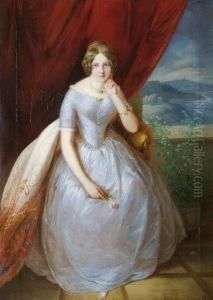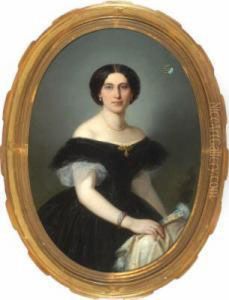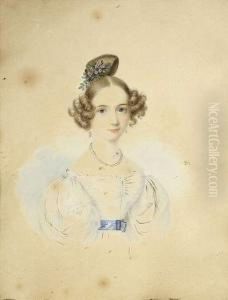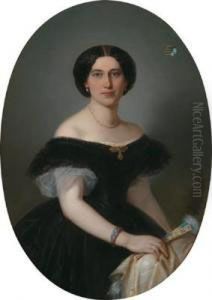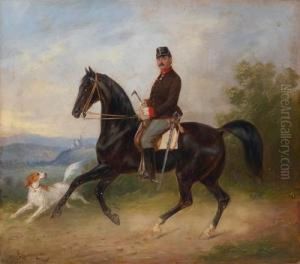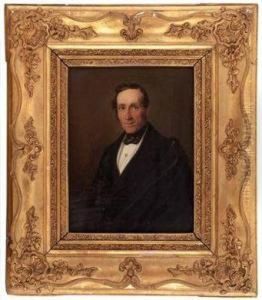Carl Martin Von Ebersberg Paintings
Carl Martin von Ebersberg was an Austrian painter known for his detailed animal paintings, particularly of horses, and his impressive hunting scenes. Born in Vienna on January 17, 1818, he developed an interest in art at a young age, likely influenced by the city's rich cultural heritage.
Ebersberg initially studied at the Academy of Fine Arts Vienna, which was the premier institution for artistic training in Austria. His talent was evident early on, and he soon became recognized for his skill in rendering animals with meticulous attention to detail and dynamic composition. This focus on animals, and horses specifically, stemmed from the popularity of equestrian sports and the nobility's interest in hunting during that period.
His works often depicted scenes from the imperial hunts, a subject that garnered the interest and patronage of the Austro-Hungarian aristocracy, including members of the Habsburg family. Ebersberg's paintings were celebrated for their realism and the lifelike portrayal of the animals, a quality that made them sought after by the elite of his time. He was particularly adept at capturing the grace and power of horses, a talent that made his work stand out.
Throughout his career, Ebersberg exhibited his work in various venues, including the Vienna Art Exhibition. His paintings not only resonated with the aristocratic circles of the Austro-Hungarian Empire but also attracted attention from art collectors and enthusiasts across Europe.
Carl Martin von Ebersberg passed away on November 22, 1880, in his hometown of Vienna. His legacy lives on through his paintings, which continue to be appreciated for their historical value and artistic excellence. Today, Ebersberg's works can be found in various art collections and museums, where they provide a glimpse into the 19th-century European aristocratic lifestyle and its association with equestrian culture.
